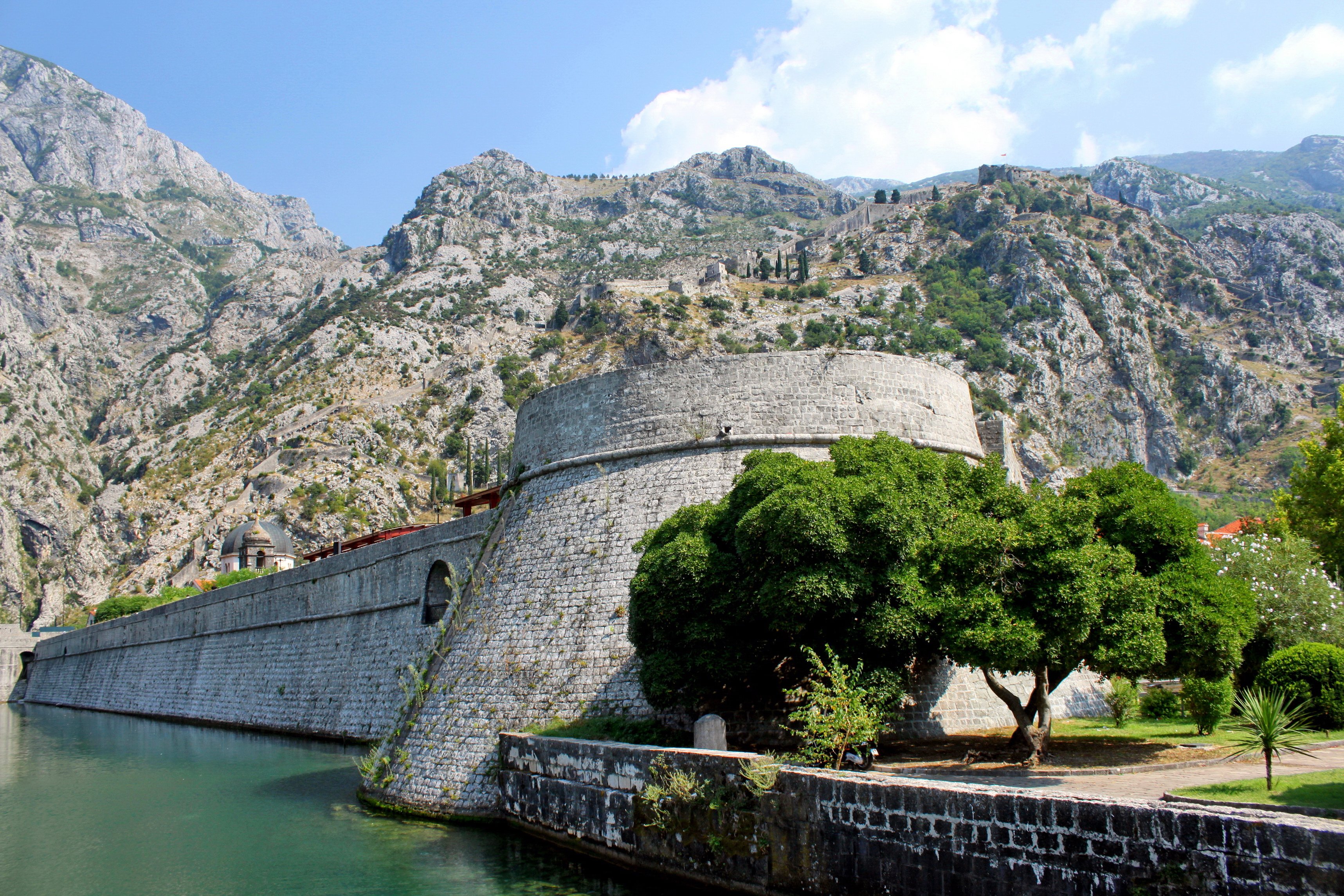🇲🇪map Montenegro [Cuisine]

Culinary Heritage
Montenegro’s food culture sits at a crossroads of the Adriatic and the Balkans, so you’ll taste influences from Venetian coastal trade, Ottoman-era comfort cooking, and hearty Slavic mountain fare. On the coast, meals lean Mediterranean: olive oil, fresh fish, rosemary, and citrus. In the interior, it becomes rustic and warming—cornmeal porridges, grilled meats, dairy-rich sides, and slow-cooked stews. Traditional techniques still matter: smoking and air-drying (especially meats and cheeses), wood-fire grilling, and long simmering for stews are common. Geography shapes the menu day to day—fishing culture around Kotor and Budva, lamb and dairy from the Durmitor highlands, and cured specialties from villages like Njeguši in the limestone mountains above the Bay of Kotor.
Signature Dishes
A few names pop up everywhere. Njeguški pršut (Njeguši prosciutto) is Montenegro’s pride: mountain air–dried, lightly smoked ham sliced thin and often served with local cheeses. On cooler days, look for kačamak or cicvara—comforting cornmeal or wheat dishes enriched with kajmak (a clotted cream–like dairy), potatoes, and local cheese. Along the coast, grilled fish and seafood—often simply seasoned with olive oil, garlic, and parsley—shine, as do black risotto and octopus “under the bell” (ispod sača), slow-cooked with vegetables. For everyday meals, ćevapi with flatbread and onions are widely available, while burek (spiraled pastry filled with cheese, meat, or spinach) makes an easy breakfast or late-night bite. In autumn and winter, hearty stews and roasted lamb are popular, and during festivals you’ll find sweets like priganice (little fried dough balls with honey or cheese).
Local Ingredients
Montenegrin kitchens rely on what grows nearby. Expect excellent olives and olive oil along the coast (Ulcinj and Bar are known for groves), plus citrus, figs, wild herbs, and seasonal vegetables. Mountain regions contribute milk, yogurt, kajmak, and distinctive cheeses—Pljevlja cheese is a common favorite—alongside lamb and mutton. Corn and potatoes remain staples for classic porridges and side dishes. Seasoning tends to be simple: garlic, bay leaf, rosemary, parsley, paprika, and sometimes a touch of hot pepper. To drink, you’ll encounter robust local wines—the Vranac red and Krstač white are standouts—plus rakija (fruit brandy, often grape or plum) offered as a welcome. Non-alcoholic options include Turkish-style coffee in the north and Italian-influenced espresso culture on the coast, along with herbal teas and mineral waters.
Dining Culture
Meals run on a relaxed Mediterranean-Balkan rhythm. Breakfast can be light—coffee and a pastry—or savory with burek and yogurt. Lunch is the social anchor, especially on weekends, and dinner often starts later on the coast in summer. Expect generosity: it’s common to be offered rakija on arrival and a small dessert or fruit to finish. In restaurants, service can be unhurried; asking for the check when ready is normal. Tipping is appreciated—around 10% for good service or rounding up in cafés. Markets are a joy for fresh produce, cheeses, olives, and cured meats; tasting before buying is common, and cash is handy for smaller stalls. Hospitality runs deep—if invited to someone’s home, bring a small gift and arrive hungry.
Where to Eat
You’ll find a spectrum from rustic konobas (tavern-style eateries with grilled meats, stews, and house wine) to seaside restaurants focused on the catch of the day. Bakeries sell warm burek, pitas, and sweet pastries from early morning. Coastal towns like Kotor, Budva, and Ulcinj are great for seafood; Cetinje and the Njeguši area are go-tos for cured meats and cheeses; and the Durmitor region is excellent for lamb, kačamak, and mountain dairy. Prices vary by location and season: beach promenades can be pricier, while neighborhood konobas and inland towns offer good value. Street-food scenes are smaller than in big Balkan capitals, but grill stands and bakeries make reliable casual stops.
Cooking at Home
Self-catering is easy. Supermarkets carry staples, and green markets stock seasonal produce, herbs, and local cheeses. Fresh fish is best sourced early from coastal markets, and butchers are happy to prep cuts for grilling or slow cooking. Basic kitchen gear—stovetop pans, an oven, and a kettle—covers most local recipes; if you want to try “under the bell” slow-cooking, look for a culinary experience rather than attempting it in a rental. Several guesthouses and local tour operators offer cooking classes that cover prosciutto and cheese tastings, kačamak, or seafood techniques. For recipes, local tourism sites and regional Balkan food blogs provide approachable guides to home versions of classics.
Dietary Considerations
Vegetarians can eat well with grilled vegetables, salads, bean stews, vegetable or cheese burek, and cornmeal dishes like kačamak (ask about added animal fats). Vegans will need to ask more questions but can still find grilled veggie plates, shopska-like salads without cheese, and bean or lentil soups cooked in oil. Common allergens include dairy (ubiquitous in kajmak, cheeses, and sauces), gluten (breads and pastries), and nuts in some desserts—ask servers directly, and many will check with the kitchen. Pork is common, but beef, chicken, lamb, and plenty of fish are available; halal options are more likely in larger towns with Bosniak communities and along main travel corridors. Tap water is generally safe in many parts of the country, but visitors often choose bottled water, especially in older coastal buildings—when in doubt, ask your host or restaurant.
Franz
Franz is a German technical writer and business consultant from Munich, with over 15 years of experience
in international corporate relocations and German business culture. Having worked for major German
multinational corporations including BMW and Siemens, Franz has extensive experience facilitating the
relocation of international talent to Germany and helping German professionals navigate complex assignments
abroad.
Published: 2025-05-10